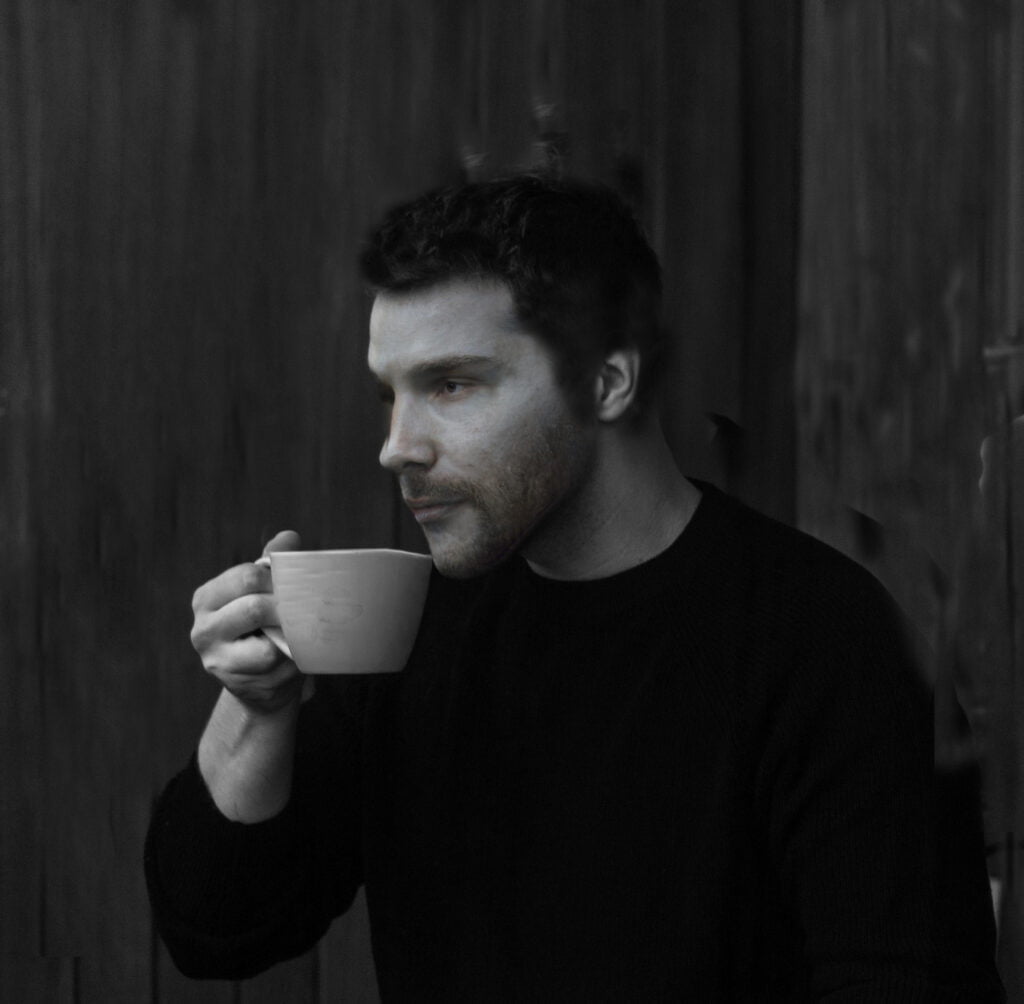The USA is the largest consumer and importer of coffee. The US alone consumes almost 750 thousand tones of coffee each year. But if we look at the data per capita vise, Scandinavian and other European nations are far ahead of the USA. Finland tops the list with 12 kg of dry coffee beans in a year per person. The US sits in the 25th position on that list with 4.2 kg of dry coffee per person.
Coffee is undoubtedly the most popular drink in the World. It is estimated that 400 billion cups of coffee are consumed each year.
Breakfast in an average European and American household is incomplete without a great cup of coffee. There are hundreds of different brewing styles and recipes for coffee, and I must say all of them are delicious.
Let’s look at the chart of the top 25 countries.

25 countries that drink the most coffee per capita
Finland tops the list with the highest coffee consumption per capita, with 12 kg of dry coffee beans in a year per person. Europe dominates the top 10 coffee-consuming nations, except Canada. This places Europe at the forefront of global coffee consumption.
All 5 Nordic nations make up the top 10 of the list; this makes northern Europe the highest coffee-consuming part of the World.
Coffee Consumption by Country Chart
| Country | Dry coffee per capita in a year (lbs) | Dry coffee per capita in a year (kgs) |
|---|---|---|
| Finland | 26.5 | 12 |
| Norway | 21.8 | 9.9 |
| Iceland | 19.8 | 9 |
| Denmark | 19.2 | 8.7 |
| Netherlands | 18.5 | 8.4 |
| Sweden | 18 | 8.1 |
| Switzerland | 17.4 | 7.9 |
| Belgium | 15 | 6.8 |
| Luxembourg | 14.3 | 6.5 |
| Canada | 14.3 | 6.5 |
| Bosnia | 13.7 | 6.2 |
| Austria | 13.4 | 6.1 |
| Italy | 13 | 5.9 |
| Brazil | 12.8 | 5.8 |
| Slovenia | 12.8 | 5.8 |
| Germany | 12.1 | 5.5 |
| Greece | 11.9 | 5.4 |
| France | 11.9 | 5.4 |
| Croatia | 11.2 | 5.1 |
| Cyprus | 10.8 | 4.9 |
| Lebanon | 10.6 | 4.8 |
| Estonia | 9.9 | 4.5 |
| Spain | 9.9 | 4.5 |
| Portugal | 9.5 | 4.3 |
| USA | 9.3 | 4.2 |
1. Finland – 12kg per capita
Finland has been the top coffee-drinking country for decades. Average Finn drinks almost 4 cups of coffee per day, and more enthusiastic coffee lovers may drink more than 20 cups in a day.
Coffee is an integral part of the culture of Finns. You can find a glimpse of coffee in Finns’ art, paintings, essays, and stories from the 19th century.
The average temperature remains below zero in Finland throughout the year, making the need for hot beverages like coffee a must.
Finns don’t like the addition of anything in their cups of coffee, like sugar or milk. Black coffee is the most popular drink in Finland.

2. Norway – 9.9 kgs per capita
Norway ranks second among countries with the highest coffee consumption, with 9.9 kgs per person. Almost 80% of Norwegians drink 4 to 5 cups of coffee per day, and the rest 20% are also coffee lovers, but they drink less frequently.
The origins of coffee culture in Norway can be traced back to the 18th century when coffeehouses began to emerge in cities such as Oslo, Bergen, and Trondheim.
These coffeehouses were popular gathering places for intellectuals, artists, and politicians who would spend hours discussing politics, literature, and culture over a cup of coffee.
Norwegians typically drink filter coffee, which is brewed in a drip coffee maker or a French press. Espresso-based drinks, such as cappuccinos and lattes, are also popular, especially in urban areas.
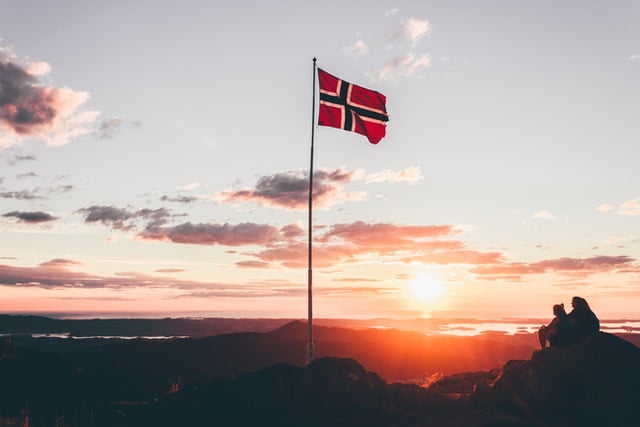
3. Iceland – 9 kgs per capita
Iceland holds the third position in the list of top coffee-drinking countries, with 9 kgs consumed per capita. Icelanders love coffee, you can find small coffee shops and cafes across all the streets in Iceland.
Icelandic coffee culture appreciates exceptional brews, including both traditional drip coffee and a growing interest in specialty espresso-based drinks.
Icelanders also claim their coffee roasting methods are the best in the World.

4. Denmark – 8.7 kgs per capita
Average Dane consumes almost 2 cups of coffee every day. Coffee is famous all across Denmark, and you can find small coffee cafes all across the country.
Cafés, known as “kaffebarer,” hold a cherished place in Danish culture. These venues range from cozy, traditional spaces to modern, stylish establishments.
You can hardly find any house or office in Denmark without a good coffee machine.
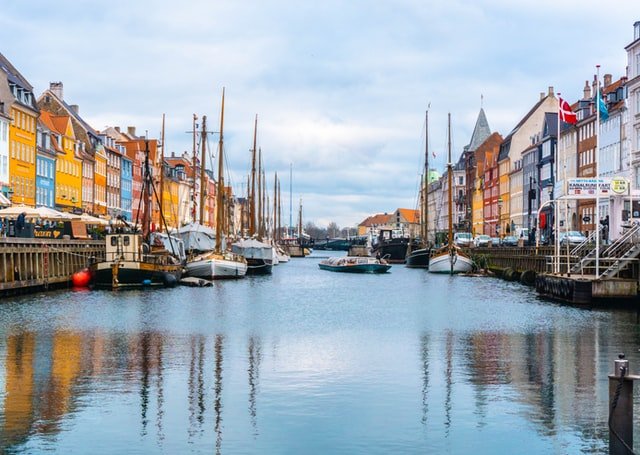
5. Netherlands – 8.4 kgs per capita
The Dutch are undoubtedly coffee connoisseurs, with the average person drinking two cups of warm coffee drink daily.
Unlike the global trend towards fancy coffee concoctions like lattes and espressos, the Dutch maintain a deep-rooted preference for the simple pleasure of a large mug of black coffee.
There is a coffee shop at every corner of the street in the Netherlands, and people love to sit there and socialize with their friends.

6. Sweden – 8.1 kgs per capita
Swedes are addicted to strong coffee. Winters in Sweden are long and dark to cope with this weather, Swedes love to have an intense cup of coffee at least two times a day.
One of the unique features of Swedish coffee culture is the “Fika.” Fika is a Swedish word that means “to have coffee” and is often used to describe a break in the day for socializing and relaxing with a cup of coffee and a pastry.
Fika is an essential part of Swedish culture, and it is a daily ritual for many Swedes. It is a time to catch up with friends and family, discuss current events, or simply take a break from work.
Swedes are also known for their high-quality coffee, and many coffee shops in Sweden roast their beans on-site. This has led to a thriving specialty coffee culture in Sweden, with many independent coffee shops and roasters offering unique blends and brewing methods.

7. Switzerland – 7.9 kgs per capita
Coffee is the most popular drink in Switzerland. It is estimated that an average Swiss person drinks about 1100 cups of coffee per year.
Swiss don’t like filtered as it’s very weak. Most Swiss people prefer to have either Espresso or French Press.
Switzerland’s coffee culture gracefully balances tradition and modernity. Switzerland is home to one of the largest unique pod-based coffee machine brands “Nespresso”.

8. Belgium – 6.8 kgs per capita
Coffee is deeply embedded in Belgian culture, with an impressive 79% of the population consuming an average of two cups per day.
Cafés in Belgium are more than places to grab a coffee—they’re cultural institutions. Coffee in Belgium is often paired with delectable artisanal pastries and chocolates, for a afternoon or evening snack.
While pod-based coffee machines have gained a foothold in Belgium, the classic Americano or Cappuccino remains the nation’s unwavering coffee choice.

9. Luxembourg – 6.5 kgs per capita
Luxembourg is a very small country but drinks a lot of coffee. More than 60% of the population of Luxembourg drinks 2 cups of coffee per day.
Coffee holds cultural significance in Luxembourg, signifying a break from the routine or a moment of connection among friends and colleagues.

10. Canada – 6.5 Kgs per Capita
Canada is the only non-European country in the top 10 coffee consuming nations, with an average of 6.5 kgs of coffee per capita annually.
Canadian cities are adorned with a diverse array of cafés, ranging from cozy local spots to well-known chains, like Tim Hortons.
Independent roasters and cafés focusing on high-quality beans and innovative flavors have surged in popularity, appealing to the evolving tastes of Canadians.

11. Bosnia and Herzegovina – 6.2 kgs per capita
Coffee became popular in Bosnia in the 14th century after the extension of the Muslim Ottoman empire.
Alcohol was banned in the Muslim regime, so most of the Bosnian population shifted to coffee as an alternative. Still, coffee is the most popular drink in Bosnia.
Traditionally, Bosnian coffee is prepared in a džezva and served in fildžans which is very similar to Turkish Coffee.

12. Austria – 6.1 kgs per capita
More than 90% of Austrians are regular coffee drinkers who love to drink one or more cups of coffee in a day.
Vienna, the capital city of Austria, has an amazing coffee culture, and it has been crowned the “Coffee Capital of the World”. Cappuccino and other milk-based coffee drinks are pretty famous in Austria.
At the core of this culture lies the revered tradition of Viennese coffeehouses, known as “Kaffeehäuser.” They serve as elegant spaces where patrons linger, socialize, and engage in intellectual discussions.

13. Italy – 5.9 kgs per capita
In Italy, coffee isn’t just a drink; it’s a way of life, deeply rooted in tradition, social interaction, and daily routines. Espresso, the most popular coffee drink around the World, originated in Italy.
Espresso machines were invented in the 19th century in Rome, Italy. These pressure-driven machines are way quicker than traditional coffee machines and deliver strong Espresso shots with a wonderful layer of crema over them.
Furthermore, Italy’s coffee heritage has transcended borders, influencing global coffee culture. The widespread popularity of espresso machines and the café experience owes much to Italy’s rich coffee traditions.

14. Brazil – 5.8 kgs per capita
Brazil stands as a global powerhouse in coffee production, shaping both its economy and cultural traditions.
Being the largest producer Coffee is way cheaper in Brazil than in Europe. You can get a good cup of coffee at local shops and cafes for only 0.5 to 1 dollar.
Brazilians like a large mug of black coffee with a lot of sugar. They don’t enjoy bitter or intense coffee like Espresso.

Also read: What country has the best coffee
15. Slovenia – 5.8 kgs per capita
Slovenians are coffee lovers, and more than 83% of Slovenians drink at least 2 cups of coffee per day.
While espresso-based drinks have gained popularity, Slovenia also holds onto its roots with traditional Turkish-style coffee, referred to as “turška kava.”
Slovenian cities like Ljubljana embrace a vibrant café culture. From trendy and modern spaces to historic and charming establishments.

16. Germany – 5.5 kgs per capita
Germany has a notably strong coffee tradition that continues to thrive today. Though tea also has a beloved place, the German Kaffee und kuchen (coffee and cake) culture is ubiquitous.
Most Germans prefer to have simple drip coffee instead of fancy milk-based coffee drinks.
Historically, German coffeehouses were spaces for intellectual exchange and cultural discussions. While this tradition endures in some places, modern cafés cater to diverse crowds, offering spaces for work, relaxation, or casual meetings.

17. Greece – 5.4 kgs per capita
Greece is not only known for its fancy beaches and popular tourist places but it’s also known for cool and refreshing iced coffee drinks like Frappuccino or Freddo Espresso to name a few.
You can sit and enjoy the scenic places of Greece while taking sips of refreshing coffee.
Coffee shops and cafes are quite famous in Greece. They remain open day and night, and they are the favorite places of Greeks to socialize.

18. France – 5.4 kgs per capita
Coffee culture in France is shaped by the nation’s renowned café culture and an appreciation for quality food and drink. Traditional French cafés, elegant brasseries, and corner bistros all embrace coffee as part of the essence and atmosphere.
French people like a strong and intense cup of coffee like Espresso or French Press.
They don’t like the addition of milk or sugar in it. According to the French, milk, and sugars destroy coffee’s true essence.
Pod-based coffee machines are also very popular in France. The average French person loves to go to a café to have a cup of coffee at least 4 to 5 times a week.

19. Croatia – 5.1 kgs per capita
Coffee came to Croatia during the Ottoman Empire and eventually became a part of their culture.
Street cafes are trendy in Croatia. While traditional Turkish coffee maintains its popularity, there’s a growing popularity for espresso-based drinks, reflecting a blend of tradition and modern culture.
The café atmosphere in Croatia embodies a sense of leisure. It’s common to spend extended periods at a café, whether engaging in lively conversations, diving into a book, or simply basking in the ambiance.
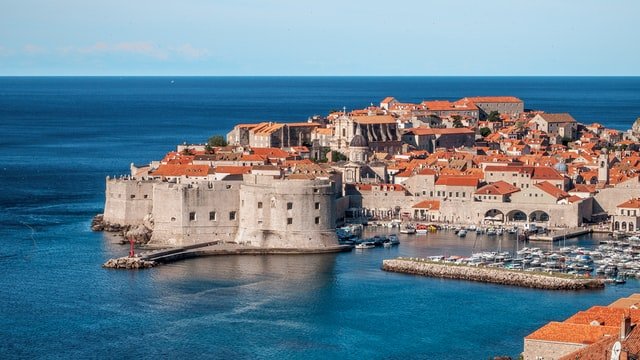
20. Cyprus – 4.9 kgs per capita
Coffee is one of the most popular drinks in Cyprus. The most popular brew is the strong ‘Cypriot coffee,‘ prepared by boiling finely ground coffee beans with water and sugar in a small traditional pot called a ‘briki.’
Cypriots often gather at local coffee shops or ‘kafenia’ to engage in lively conversations, discuss current affairs, or simply catch up with friends and family over a cup of coffee.

21. Lebanon – 4.8 kgs per capita
Lebanon is the only Arab country in the top 25 list of most coffee-drinking countries. Coffee culture is deeply ingrained in Lebanese society.
Lebanese coffee is brewed from dark roast coffee beans spiced with cardamom and served in small ceramic cups with or without sugar.
Coffee shops line the streets of every Lebanese city, filled with locals leisurely smoking hookah and playing games like dominos over tiny cups of Lebanese brew.
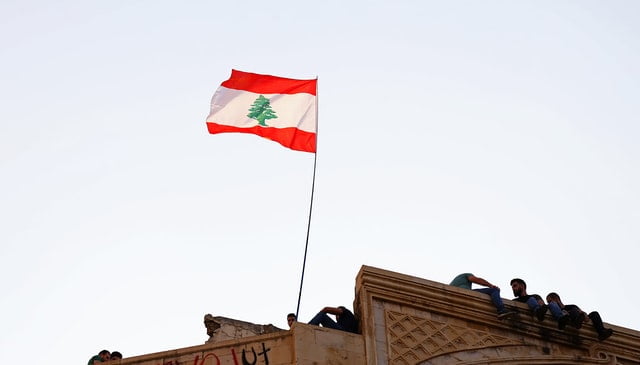
22. Estonia – 4.5 kgs per capita
Coffee was introduced to Estonia in the 18th century and became one of the most beloved drinks over time.
One of the staples is ‘kohvik,’ Estonian for café, where locals gather to savor their favorite brews.
From the strong and classic ‘must kohv’ (black coffee) to the more elaborate ‘kohvi vahuga’ (coffee with foam), each cup is savored amidst conversations, meetings, or moments of solitude.

23. Spain – 4.5 kgs per capita
Coffee culture in Spain is defined by the “café solo” – small shots of rich, strong espresso. Rather than large diluted cups, baristas expertly craft espresso shots with intense flavor to be rapidly enjoyed.
This focus on espresso extends to popular milk-based drinks like Cortados – a shot of espresso “cut” with a dash of steamed milk.
Cafés, known as ‘cafeterías,’ are lively hubs where locals converge. It’s not just about the coffee; it’s about the ambiance, the conversations, and the sense of community.

24. Portugal – 4.3 kgs per capita
Coffee plays a vital role in Portuguese culture, with the strong, rich espresso taking center stage.
Locals traditionally have their morning “bica” (espresso) standing up at their neighborhood café to kickstart the day. Milk-based drinks like “galão” (latte) are also popular.
The act of ‘ter uma bica’ (having a coffee) is a social ritual. It’s a chance to connect, catch up with friends, or engage in leisurely conversations.

25. United States – 4.2 kgs per capita
The United States is the largest importer of coffee as Americans love coffee and can’t live without it. Coffee is more popular among the older generation of the States.
With major chains like Starbucks, Dunkin’ Donuts, and Caribou Coffee on practically every street corner, coffee shops have become important community gathering places.
The typical American coffee shop offers a wide variety of coffee and espresso drinks, from basic brewed coffee and lattes to flavored cappuccinos and frozen blended drinks.
In the USA, large 9 oz cups of coffee are more popular than small shots of Espresso.

What Countries Drink the most coffee overall?
The United States is the world’s largest coffee-drinking country overall, consuming 27 million 60lb bags of dry coffee beans annually.
The reason is the USA is a big country with a population of 336 million. In comparison, the population of European countries that tops the per capita list is very little compared to the USA.
Second on this list is Germany, which consumes 7 million 60lb bags of coffee in a year.
Take a look at the top 10 countries that consume the most coffee in the World overall. The numbers are in thousands of 60 lb bags of dry beans.
| Country | Coffee consumption (overall) Thousand of 60 lb bags |
|---|---|
| United States | 27,310 |
| Germany | 8,670 |
| Japan | 7,551 |
| France | 6,192 |
| Italy | 5,469 |
| Russia | 4,820 |
| United Kingdom | 3,770 |
| Spain | 3,253 |
| Poland | 2501 |
| Netherlands | 2030 |
Why do Nordic Nations drink so much coffee?
Looking at the list of top coffee-consuming countries above, you might have noticed that all of the 5 Nordic nations, Finland, Denmark, Norway, Iceland, and Sweden, make up the top 6 of the list.
So, the question arises here: Why are Scandinavians obsessed with coffee so much? Even though they are located very far away from the bean belt (coffee growing regions).
During the 19th century, the Nordic nations were not very wealthy, and the government imposed heavy taxes on alcohol-based drinks. However, the Nordic people needed something to keep them warm and stay energized since the weather was too cold.
Here coffee comes to the rescue and eventually becomes a part of Scandinavian culture. Coffee became the social norm in Nordic nations, and everyone started to praise that delicious drink.
Secondly, the colder climate lends itself well to hot coffee drinking. Coffee provides warmth and comfort during long, cold winters when the sun may barely rise.
Which country drinks the most coffee in Asia?
In Asia, Japan is currently the largest consumer of coffee. Japan has a well-developed coffee culture, and there are many Western cafes and restaurants serving coffee.
Coffee is not popular or widely consumed across much of Asia. While the specialty coffee scene is growing in certain major cities and among younger generations, traditional tea cultures still dominate in most Asian countries.
In Japan and South Korea, coffee has certainly gained popularity thanks to the influx of Western chains and cafes. However, overall consumption of coffee remains very low compared to tea, which is deeply ingrained in Asian food cultures.
Southeast Asian countries like Vietnam and Indonesia produce a lot of coffee agriculturally but drink very little. Even this large-scale production of coffee is deeply rooted in the colonial past of most Southeast Asian Countries.
Final Thoughts
This article presents detailed statistics on what country drinks the most coffee in the World both per capita and nationwide.
As of 2022, Finland drinks the most coffee in the World per Capita. Coffee is a delicious drink that keeps us warm and energetic. As we see in the top 25 list, most countries have very cold and long winter seasons. So, that makes Sense!
All of these countries share a love for coffee, but their coffee cultures differ significantly. Some prefer to drink coffee at home while others prefer to drink it in cafes. Some prefer smooth or milk-based coffee drinks, while others prefer rich and intense black coffee.
Check Out Related Articles:
FAQs
What country drinks the least coffee?
Mostly Asian Countries like China, India, Pakistan, and Indonesia drink the least amount of coffee. This is often due to well-established tea-drinking cultures as well as coffee being seen as a luxury rather than a daily staple.
Which Country produces the most coffee?
Brazil is the largest producer of coffee in the world. The country has a long history of coffee cultivation and consistently tops the list of global coffee-producing nations.
Following closely, Vietnam is a major Robusta coffee producer, while Colombia is renowned for its quality Arabica beans. Honduras, Ethiopia, Peru, Mexico, Uganda, and Guatemala are also prominent contributors to the global coffee supply.

